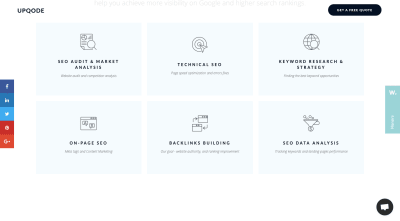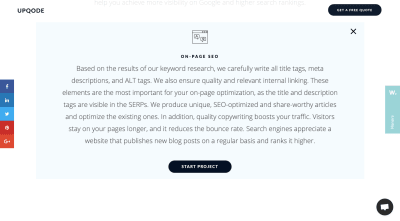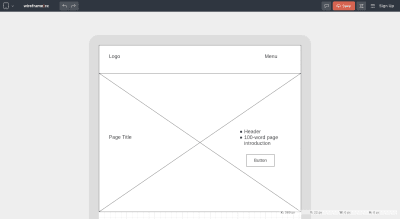
Where Does SEO Belong In Your Web Design Process?
Where Does SEO Belong In Your Web Design Process?
Suzanne Scacca
We all have a role to play in the building of a website. Designers create beautiful and interactive interfaces. Copywriters create messaging that gets visitors to take notice and action. Developers bring it all together with code.
But there’s one piece of the puzzle that can’t be handed off to just one person. And that’s SEO.
If you’re building websites for clients and they’re expecting impressive outcomes in the end (i.e. high conversion rates), SEO has to be part of your process. You can’t just leave it in the hands of your writer or a dedicated SEO and assume that’s enough.
Google is a demanding overlord and we must appease it if we want our websites to reach the top of search. And what that means is taking a well-rounded approach to SEO throughout the lifecycle of the website design and development process.
If you haven’t accounted for this already or you want to make sure you’ve covered all the bases in what you currently do, this post is for you. I’m going to run through when and how SEO needs to enter the picture in your workflow. In addition, I’ve included an SEO checklist at the bottom of this post that you and your team can adapt to your workflow.
Where Does SEO Belong in Your Web Design Process?
SEO should be something you’re always thinking about and planning for, from the prospecting phase all the way to the launch date.
SEO During the Proposal Phase
When you talk to a prospect about what they need your help for, they’re going to focus on the website itself.
“I need a website so I can sell my products online/grow my presence/get new customers.”
But that’s not really what they’re asking for. What they want is a website to help their business get found in Google and to convert visitors, which requires something more complex from you than just slapping together some copy and designs.
You know that the website needs to be optimized for search if the website is to do what the client needs it to. Because of this, it’s going to impact things like cost, timeline and process flow. All of these details should be mapped out on your end as you prepare the proposal.
As for what you actually tell your clients? This is where things get tricky.
You have to somehow address SEO with your prospect 1) to set the right expectations and 2) to justify what you’re about to propose to them in terms of scope and cost. The only problem is, some clients might know the term “SEO”, but they don’t really understand what it entails.
The conversation could quickly devolve into something like this:
You: [You explain the details of your design offering and mention that SEO is part of it.]
Client: “Oh, great. I have a list of 20 keywords I want included in every page.”
You: “Well, that’s not really what search engine optimization is. If you want your website to perform well, you need to pay attention to things like caching, security and mobile-first design.”
Client: “What are you talking about? Cashing? What even is that? I thought you said you do SEO. I want to rank for these 20 keywords.”
It’s your job to get clients the results they need, not to try and explain to them the technicalities of how you do it. That’s why they’re paying you to do this, after all. So, here’s what I’d recommend for your proposal and early discussions with clients:
First, let your website do all the talking about SEO like UPQODE’s does:

This would allow you to clearly spell out the kinds of SEO you provide (which will also help those SEO-minded clients find you in the first place). It’s okay to include technical terms here so long as you briefly explain what each is in layman’s terms:

What I like about this approach is that it enables you to say “We’re going to do X, Y and Z” while framing it in a light that the client actually understands. In this case, what you’d really be saying is “We handle all the technical stuff so your site’s visibility grows in search and, consequently, you get more traffic.”
This is how you should be talking to your prospects and laying out SEO-related details in your proposals and contracts, too.
In other words, don’t delve too much into your SEO tasks. Instead, just spell out the benefits. For example:
- Responsive web design that looks great on all devices.
- Web pages that load in three seconds or less for optimal visitor experiences.
- Tightened up security to keep all your business data as well as your visitors’ data private.
- Content that’s easy for humans to read and even easier for Google bots to understand.
- Custom-built user pathways that turn visitors into customers in no time.
The goal is to get them onboard with your search-optimized web design services and perhaps even ongoing maintenance and support afterwards. To do that, you have to clearly convey the benefits without getting them wrapped up in the technicalities of SEO.
SEO During the Setup and Planning Phase
In the early phases of an approved project, SEO shouldn’t be far from your mind. While you might not actively be working on optimizations yet, it’s a good idea to make sure the baseline you’re working from won’t cause more work for you down the line.
Here are some things to keep in mind:
Review the Client’s Design Assets
You probably ask clients to provide you with assets, logins and even copy before a project gets underway. While this is mainly to protect yourself from scope creep, it can also come in handy for SEO.
Say your client hands over logos and other image assets that are really low quality or look super outdated. The earlier you have these assets in hand, the sooner you can let them know that they need to be replaced if they want people to take their website seriously.
If visitors don’t like the look of a website, they’re going to abandon it without fail and that high bounce rate is going to kill the site’s ranking. So, make sure your clients don’t stand in the way of the results you’re trying to help them achieve.
Work in Tandem with the Copywriter
Even if a professional copywriter is creating the content for your website, if you’re not working closely with them from the start, there could be problems.
Web design agencies often debate the merits of content-first website development vs. design-first. The truth is, they should be created together. If you don’t, you put the whole project at risk.
For starters, a writer and designer working in isolation are bound to come up with different ways to handle style and layout. But if you establish guidelines from the get-go (which you can easily do with wireframes), you can avoid any disjoint in how the copy and design are created.

You’re going to wireframe any website you build anyway, so why not provide a copy of it to the writer so you two can be on the same page from the beginning? Even better, why not collaborate with the writer? They might not know design techniques or best practices, but they can certainly provide insight on things like optimal text length, the priority of certain sales or marketing messages and so on.
Then, there’s the matter of optimizing copy for search. Ideally, you’d want to work with a copywriter who can do the following:
- Create actionable messaging and CTAs,
- Naturally weave target keywords into the copy,
- Write for user intent,
- Write in HTML,
- Create copy that’s both readable and scannable,
- Build a system of internal links from page to page,
- Create meta tags and optimize URLs for search,
- Write alt tags for images.
The more of this that gets built into the copy from the get-go, the less back-and-forth you have to do with them later. It’ll also spare you the trouble of trying to fix this on your own (which you shouldn’t attempt to do).
Design for Sales Funnels
In order to increase conversions on a site, you should be designing sales funnels into them. But sales funnels aren’t just a series of steps that you lay down for visitors on the website.
It all begins with understanding user intent outside of the site. If you know what draws visitors to your site from search engines and social media, you can design your metadata and landing pages to align with that intent.
Again, if you do the research and planning upfront with SEO in mind, you’ll have less cleanup work to do later.
SEO During Design and Development
This, obviously, is the most important and labor-intensive stage for you. And while it’s easy to get wrapped up in designing and coding, it’s important not to lose sight of SEO here.
What I’d recommend is creating a universal SEO checklist you can use from project to project. If you account for every possible optimization now, you can take the guesswork out of SEO. Plus, a checklist allows you to become better acquainted with everything that needs to be done, which will enable you to find more efficient ways of building search optimizations into your process.
To help you along, I’ve created the following SEO checklist. Feel free to copy and use for your own needs:
- Technical SEO
- Web hosting with 99.9%+ uptime
- Domain with clean web history
- SSL certificate installed
- Firewall implemented
- Caching enabled (page, browser, object, etc.)
- Image compression and resizing (in-house system or automated)
- Automated backups
- Google Analytics account connected
- Google Analytics goal tracking, ecommerce tracking and other special tracking enabled
- Google Search Console account connected
- XML sitemap set up and submitted to Google
- Separate sitemap submitted for images and for videos
- Robots.txt set up
- Schema.org markup (when relevant) written
- Design SEO
- Information architecture mapped out
- Responsive web design
- Mobile-first web design
- 1 clear CTA per page
- Custom 404 page set up
- All links, buttons and forms tested and working
- On-page SEO
- 1 unique focus keyword per page
- Focus keyword density between 1-3%
- 50-60 character meta title including the focus keyword
- 150-160 character meta description including the focus keyword
- Short but descriptive slug including the focus keyword
- Error-free content
- At least 1 relevant internal link per page
- Featured image for each page
- Descriptive alt text for each image
- Header tags used (focus keyword included in at least 1)
- Headers appear every 300 words or so
- Sentences stretch no more than two lines
- Paragraphs stretch no more than five lines
- Duplicate content analysis
- Plagiarism check
- Local SEO
- Google My Business page set up
- Geo-specific keywords included
- Location-specific pages created (when relevant)
- Contact information provided (e.g. phone number, address, etc.)
- Ongoing SEO Support
- Web server uptime, speed and security analysis
- Page speed testing
- Security monitoring
- Google blacklist monitoring
- Keyword rank monitoring
- Broken link checking
- Software updates
A Few Notes
- Anything that’s not relevant to the kinds of clients you serve or the kinds of services you offer, delete the row.
- If there’s anything I’m missing, feel free to add it on (like if you specialize in e-commerce design and want to prep product pages to appear in Google Shopping results).
- If you’re not comfortable checking the on-page SEO stuff, hand it off to a proofreader or editor (someone who didn’t do the copywriting).
For those of you looking for additional opportunities to make money, this SEO checklist can also be used to analyze an existing website and present a prospective client with a website redesign or optimization plan.
Wrapping Up
Keyword optimization and link building are only part of the SEO puzzle. As a web designer or developer, you have a huge contribution to make here as well. Whether it’s in the quality of code written on the backend, the way images are optimized or how well-secured the site is, these are the kinds of tasks you’re responsible for managing that no writer or SEO is going to or should handle. And, without these optimizations, Google and your visitors will fail to take notice of the site you worked so hard to build for them.
 (ra, il)
(ra, il)
Articles on Smashing Magazine — For Web Designers And Developers
